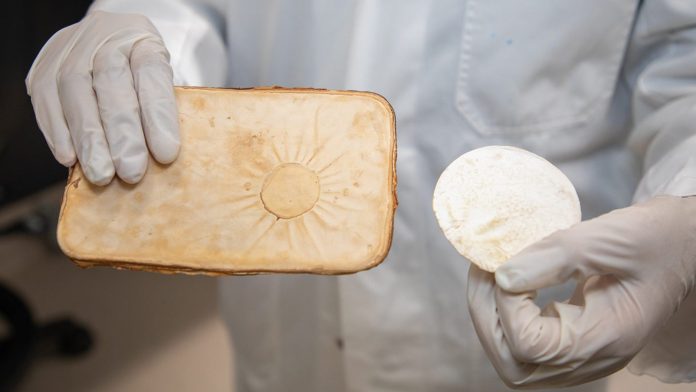As the climate worsens and historic wildfires ravage our planet, it is vital to find new, sustainable ways to protect people and ecosystems from the growing threat of fire. In recent years, mycelium, a root-like structure made from fungal strands, has become one of the darlings of technology as an ingredient in attachable computers, building materials, and leather. Recently, researchers at Australia’s Royal Melbourne Institute of Technology have made promising advances in converting the unique material into fire-resistant roofs.
[Related: Inside the lab that’s growing mushroom computers.]
“What’s great about mycelium is that it forms a heat-protective layer of char when exposed to fire or radiant heat,” said RMIT Professor Everson Kandare, an expert on flammability and thermal properties of biomaterials, in a statement. “The longer and the higher the temperature at which mycelial char survives, the better its use as a refractory material.”
Kandare and his colleagues published their research on mycelium as a fire retardant earlier this month in the journal Polymer Degradation and Stability. The team was able to create wafer-thin layers of mycelium from edible Basidiomycota fungi in containers of sugar-sweet molasses. They then added sodium hydroxide to convert the chitin in the mycelium into chitosan.
According to New Scientist, the chitosan quickly turned into a protective layer of char when exposed to flames of nearly 1500 degrees Fahrenheit. “The material caught fire for about a second and then went out on its own,” co-author Tien Huynh told New Scientist.
[Related: Fungi spores and knitting combine to make a durable and sustainable building material.]
Today, many composite cladding panels contain plastics whose incineration poses a risk to people and the environment. “Bromide, iodide, phosphorus and nitrogen-based flame retardants are effective but have negative health and environmental impacts,” Kandare said in the release. “They pose health and environmental concerns because carcinogens and neurotoxins that can escape and linger in the environment harm plants and animals.” Instead, the researchers say, their mushroom solution only emits water and carbon dioxide.
Of course, plastics are considerably cheaper and easier to produce than mushroom growing, but Huynh added in the press release that leftover organic waste from the mushroom growing industry could one day help bring products like this to market.
“Working with the mushroom industry would eliminate the need for new farms while producing products that meet fire safety requirements in a sustainable way,” said Huynh.
www.popsci.com
https://www.popsci.com/technology/mycelium-fungi-fire-roof/












